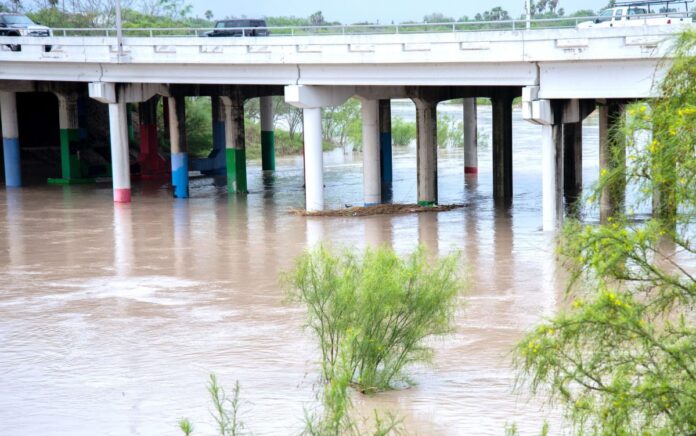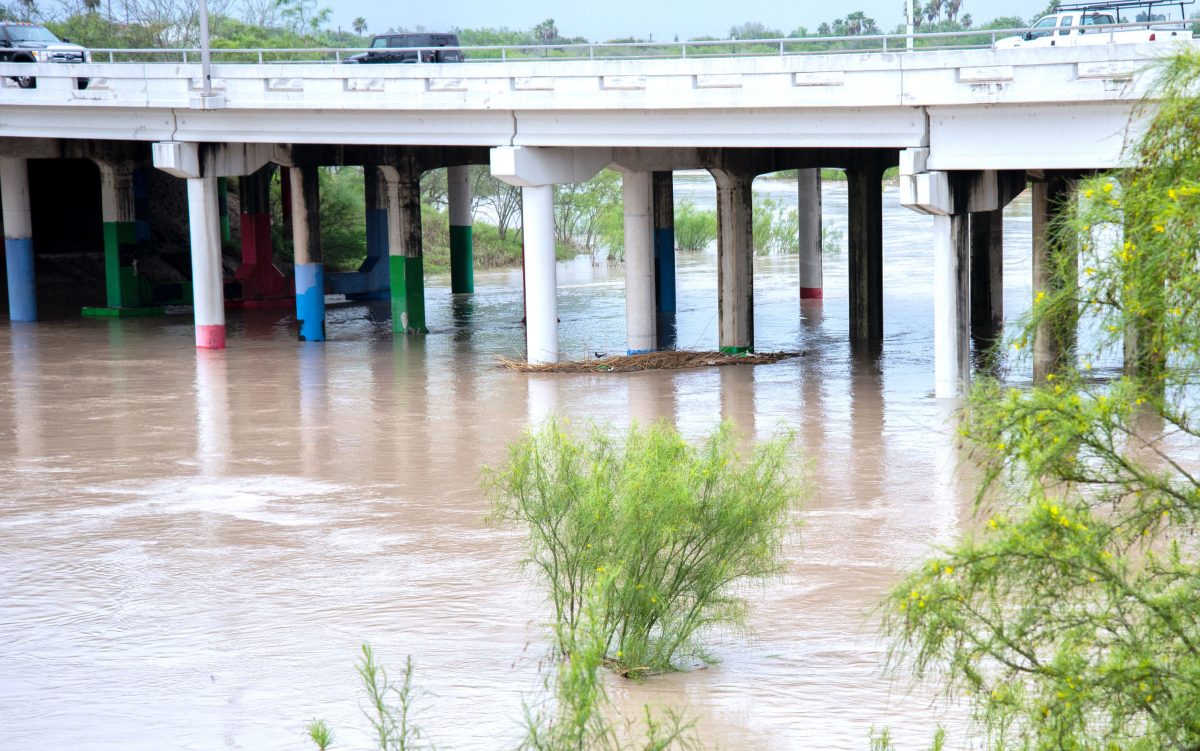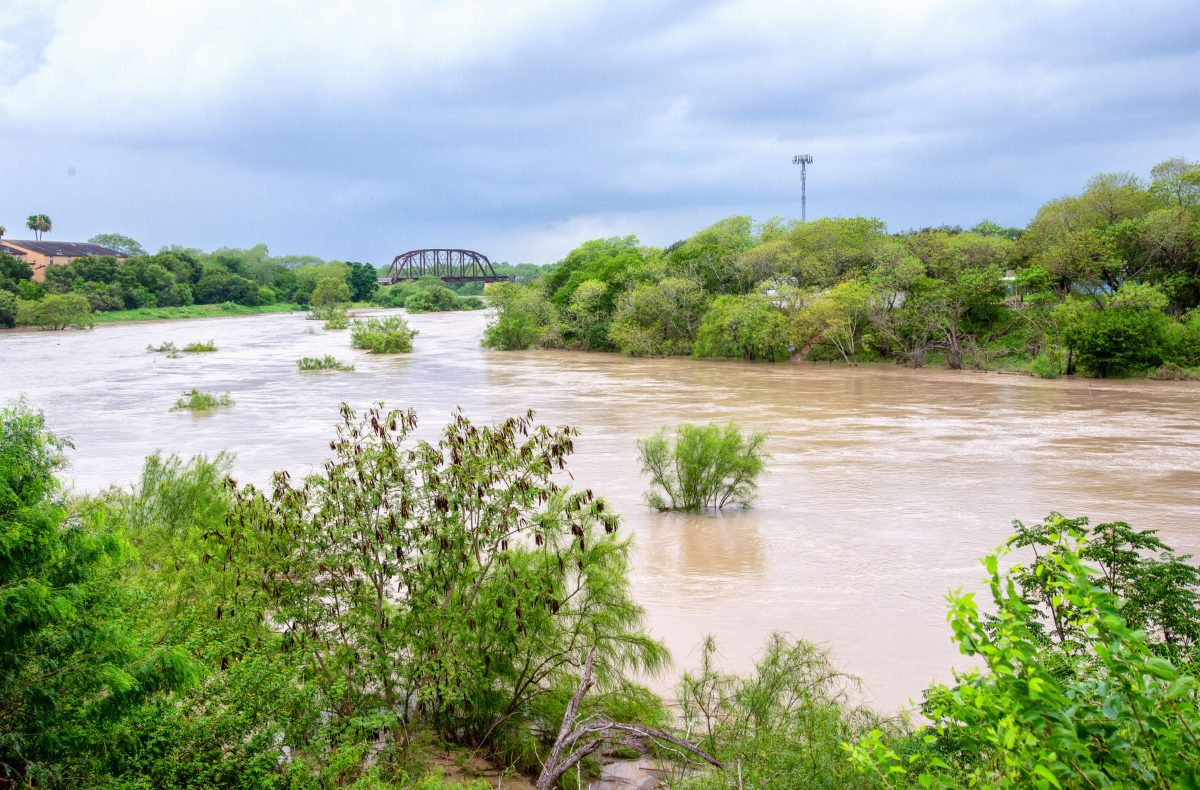HARLINGEN — The top of a bridge appeared to float across the swollen Arroyo Colorado yesterday as long stretches of a $1 million hiking trail lay submerged in floodwaters.
Like Joshua Yeatman, residents stopped along the arroyo to find portions of the 2-mile Arroyo Colorado Hike and Bike Trail swallowed in floodwaters stemming from last week’s storm that dumped as much as 16 inches of rain in about four days.
“I heard about it so I just came by to check it out,” Yeatman said yesterday afternoon as he walked his dog at Arroyo Park.
“It’s a cool place to hang out with your family,” he said. “I wonder how long it’s going to be under water.”
Across McKelvey, C.B. Wood and Arroyo parks, floodwaters have buried most of the Arroyo Colorado Hike and Bike Trail’s asphalt track.
“The water is all the way up,” Armando Villela, the city’s parks maintenance supervisor, said. “It’s pretty bad.”
Officials expressed concern the floodwaters could damage the ribbon of asphalt that winds along the trail.
“It could cause it to break away — pieces of it coming off,” Villela said.
Yesterday, the trail’s three pedestrian bridges remained submerged.
At Arroyo Park, muddy water lapped across a bridge’s steel railing, the only sign of the trail engulfed in floodwaters.
“Hopefully, there isn’t water damage or any structural damage,” Villela said.
At City Hall, officials did not know the extent of damage to one of the city’s most popular attractions.
“We won’t be able to make an assessment until after the water recedes,” Assistant City Manager Carlos Sanchez said. “We’re going to keep an eye on it.
“The entire area is going to sit under water for some time. We’re going to address the situation so it can be preserved as much as possible.”
The flooding marks the first time in several years that floodwaters have submerged the trail.
In 2010, the trail and its bridges withstood weeks under water after the International Boundary and Water Commission released floodwaters into the arroyo.
In 2000, the trail opened with three bridges whose steel anchor bolts clamp the structures’ trusses onto concrete pilings driven 30 feet into the ground.






